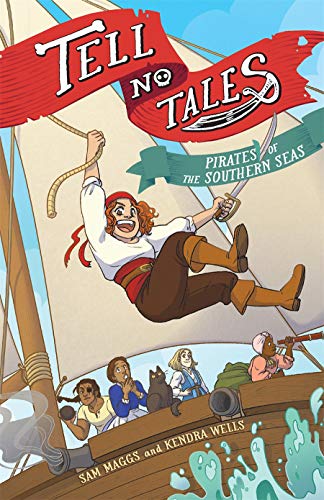Tell No Tales: Pirates of the Southern Seas
This graphic novel recounts the adventures of real-life 18th-century pirates Anne Bonny and Mary Read, with cameo appearances by Jack Rackham. Anne’s crew of misfits preys on ships in the Caribbean and are pursued by Woodes Rogers, a mysterious captain who may or may not be in the employ of the Royal British Navy.
In the four-page history at the back of the book the authors claim the belief that pirates were bad was the result of a vicious public relations campaign and “couldn’t have been further from the truth.” Rather, they were egalitarian, opportunistic, free-booters who welcomed women, people of color, and all gender identities into their crews, and preyed only on the rich, to give to the poor. Some of those things are true; what is also true is that pirates were thieves, murderers, and rapists. Ignoring that side of their character is a disservice to young readers who deserve an honest appraisal of historical events.
The authors try to demonstrate gender equality in Bonny’s crew, but in a confusing manner. In life, Bonny was attracted to both men and women and was intimate with Mary Read; the fictional Anne calls Rackham her ex-boyfriend and she is clearly attracted to “Read,” as she calls herself in the novel. Unfortunately, Wells’s illustrations do not help a young reader understand gender identity, nor does Maggs’s text. At one point, Read says she is not a boy, in another section she says she is not a girl. Young readers would be easily confused by these remarks, especially when they would not learn about the real Mary Read until after they had read the novel.
This is an ambitious novel, but sadly, falls short of its promise.










